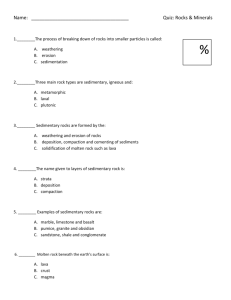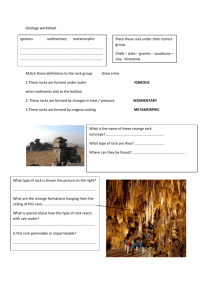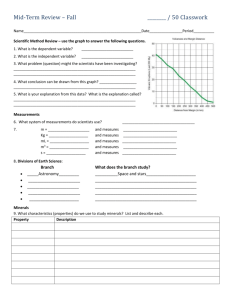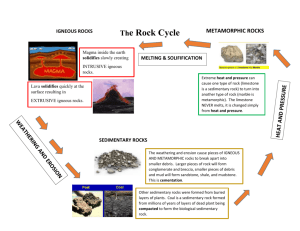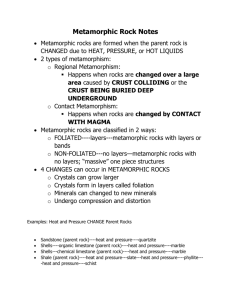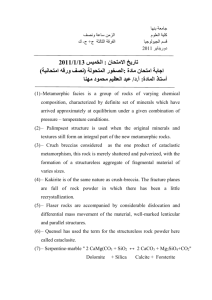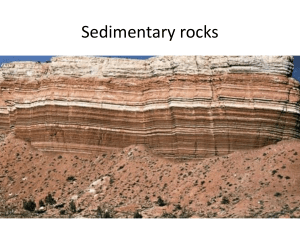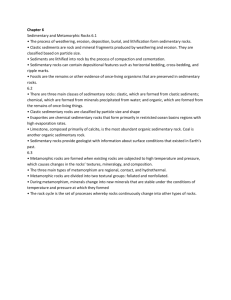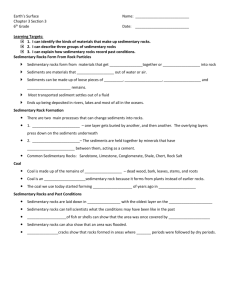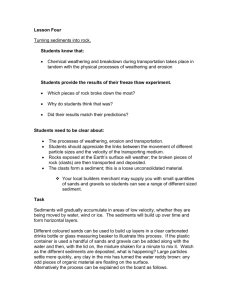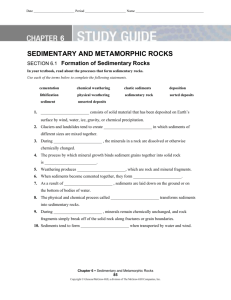study-guide-sedimentary-and-metamorphic
advertisement
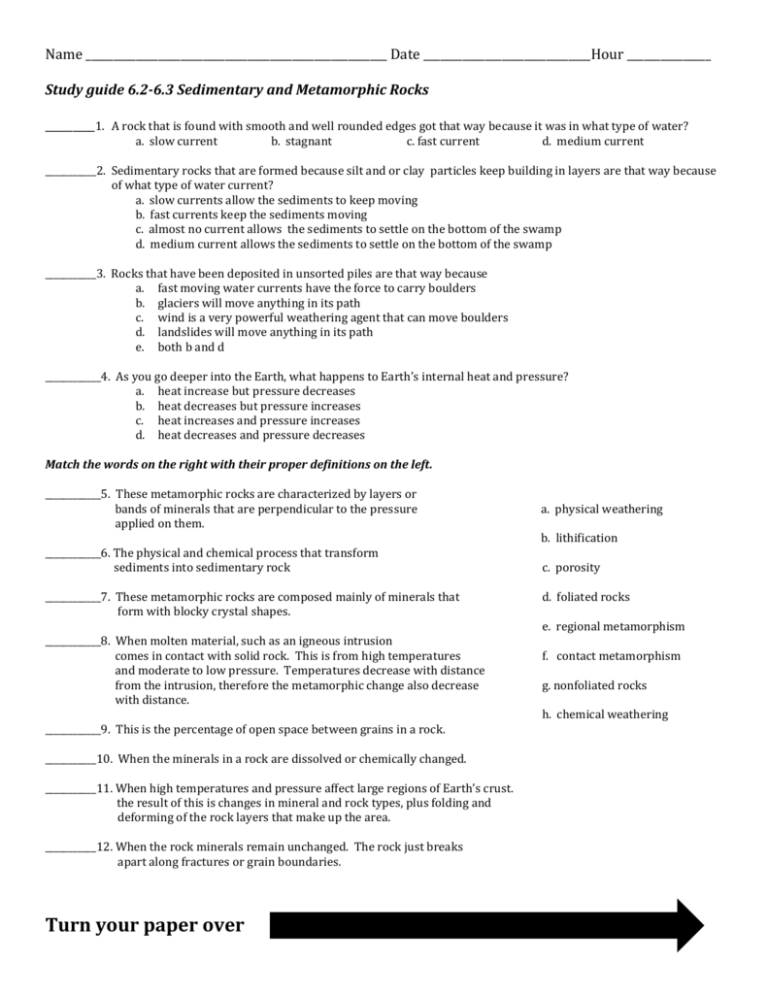
Name ______________________________________________________ Date ______________________________Hour _______________ Study guide 6.2-6.3 Sedimentary and Metamorphic Rocks _________1. A rock that is found with smooth and well rounded edges got that way because it was in what type of water? a. slow current b. stagnant c. fast current d. medium current ___________2. Sedimentary rocks that are formed because silt and or clay particles keep building in layers are that way because of what type of water current? a. slow currents allow the sediments to keep moving b. fast currents keep the sediments moving c. almost no current allows the sediments to settle on the bottom of the swamp d. medium current allows the sediments to settle on the bottom of the swamp ___________3. Rocks that have been deposited in unsorted piles are that way because a. fast moving water currents have the force to carry boulders b. glaciers will move anything in its path c. wind is a very powerful weathering agent that can move boulders d. landslides will move anything in its path e. both b and d ____________4. As you go deeper into the Earth, what happens to Earth’s internal heat and pressure? a. heat increase but pressure decreases b. heat decreases but pressure increases c. heat increases and pressure increases d. heat decreases and pressure decreases Match the words on the right with their proper definitions on the left. ____________5. These metamorphic rocks are characterized by layers or bands of minerals that are perpendicular to the pressure applied on them. a. physical weathering b. lithification ____________6. The physical and chemical process that transform sediments into sedimentary rock ____________7. These metamorphic rocks are composed mainly of minerals that form with blocky crystal shapes. c. porosity d. foliated rocks e. regional metamorphism ____________8. When molten material, such as an igneous intrusion comes in contact with solid rock. This is from high temperatures and moderate to low pressure. Temperatures decrease with distance from the intrusion, therefore the metamorphic change also decrease with distance. ____________9. This is the percentage of open space between grains in a rock. ___________10. When the minerals in a rock are dissolved or chemically changed. ___________11. When high temperatures and pressure affect large regions of Earth’s crust. the result of this is changes in mineral and rock types, plus folding and deforming of the rock layers that make up the area. ___________12. When the rock minerals remain unchanged. The rock just breaks apart along fractures or grain boundaries. Turn your paper over f. contact metamorphism g. nonfoliated rocks h. chemical weathering Circle the correct bolded word to make the sentences true. 13. Conglomerates are medium-grained / coarse-grained / fine-grained sedimentary rocks. Examples of these types of rocks are breccia which has rounded / angular pebble sized particles and conglomerates which have rounded / angular pebble sized particles. 14. Sandstone are medium-grained / coarse-grained / fine-grained sedimentary rocks. They have sand-sized particles and are found in ________________ a. stream and river channels b. desserts c. beaches d. all of the above

